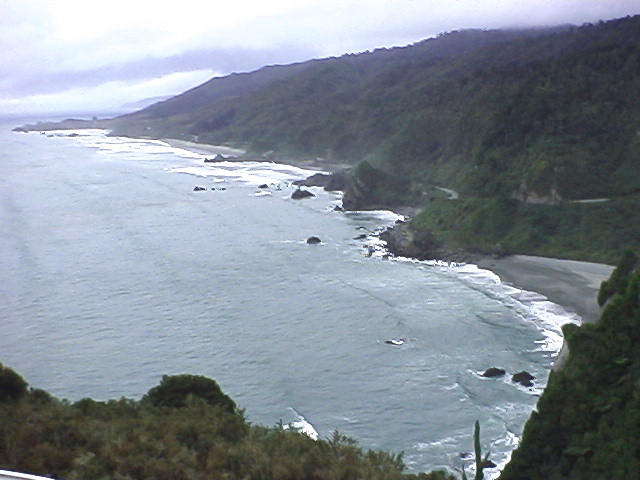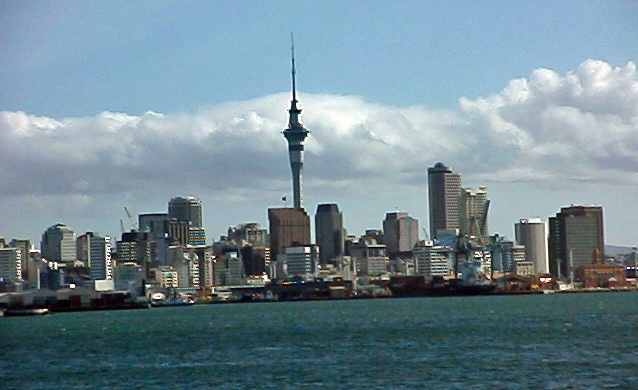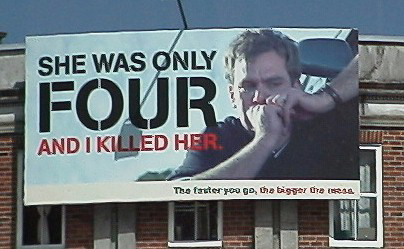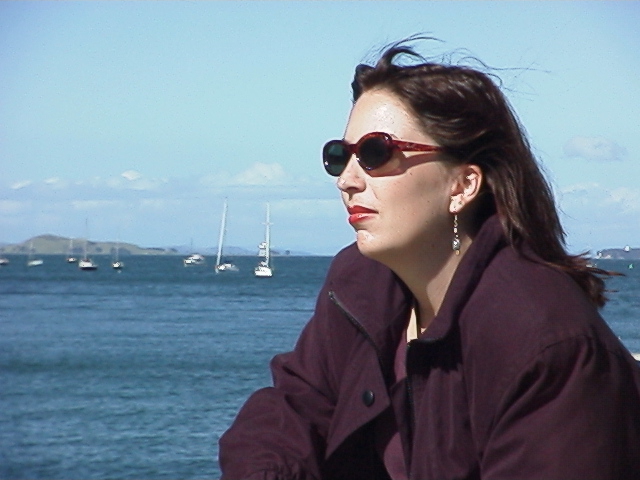
Around the World 1998; Auckland, New Zealand
Note; this post is recreated from the original wired2theworld website post with the dates below. The old posts were reformatted in 2018 for the 20th anniversary of wired2theworld. As much as possible, the content is unchanged and unedited from the original, only some formatting, spelling, and link errors have been corrected.
NEW ZEALAND: Auckland
US$1=NZ$1.93
September 15, 1998 Kia Ora !

David’s Diary:
KIA ORA (pronounced KEE-ODA) is the Maori equivalent to the Hawaiian Aloha. The Maori are the oldest known indigenous people of these islands, arriving by canoe around 650. They are Polynesian by descent, although their specific homeland is not to be found on any map. They come from a spiritual homeland known only to the Maori, felt somewhere deep in their hearts and spirit. The ocean-going canoes in which they came, however, were enormous- leading me to believe that their spiritual homeland must have had some very large trees on the scale of our Sequoia or their kauri (both in the redwood family). The smallest of the seven twin hull canoes to first touch land on these islands measured a mere 35 meters in width by 75 meters in length! That is about 125 ft wide and 250 ft long for my metrically challenged North American comrades- we are not talking about a couple of dinghies here, folks. The first tribes of Maori, as well as the regions they call home in New Zealand, derive their names from the name of the canoe which brought them here from their elusive spiritual homeland.
The Auckland Museum’s central exhibit and the permanent collection are devoted to the Maori people and cultural history. According to our hosts, David and Bryan (who run the B & B we are staying in), New Zealanders have only recently begun to celebrate the contributions of their Native peoples. It is quite clear from the museum that the Maori were given the kind of treatment that the Native Peoples of North America received at the hands of our white forefathers. What appears to have happened in the last decade amounts to some kind of collective guilt, which has manifest in a powerful resurgence of Maori cultural awareness, documentary films on the local television station, artistic showcases, and the incorporation of regional Maori giftshops at all of the big tourist attractions.
That said, I do not mean for my readers to get the impression that Maori culture has been cheapened by this. On the contrary, the sentiment feels quite legitimate from all sides, and even though there is a fair amount of consumerism involved in the whole thing, there is a bottom line of economic survival in a free market economy which must be recognized as the modern reality- even for an ancient people. First and foremost, the Maori are proud and committed to their traditions. They have obviously learned to adapt to ‘modern’ society, but they have not let go of their past. Written history is not a part of their tradition, but one can find most of the significant history recorded in the form of elaborate artistic wood carving. Each Maori village has a common house, shared by all its inhabitants, into which large, elaborate carvings are placed, and continually added, depicting events, and people of note. These become the ‘ribs’ of the big house and actually serve as the walls of the common lodge. The common lodge, not surprisingly, is a school, and a meeting place, and a guesthouse, and a church, and so on. Most of all, it is the place where stories are told- histories mostly, and preserved through a rich oral tradition. The one taboo in this great house is the consumption of food. No food ever passes through the doorway of this house, and to bring food in is one of the greatest violations of Maori custom. The Maori were, and are still, fierce warriors. There is a saying: Men die because of women and land. The Maori were constantly going into battle. It was, in fact, the primary role of any male Maori- to defend his village’s women and land.
We have been in Auckland for three days and I am truly impressed with my first impressions of New Zealand. Although on paper, we share the same language, the feeling one has of being far from home is quite strong. The most significant indication of that distance, for me, comes in our difficulty finding the International Herald Tribune. After three days of diligent searching, turning up the odd, and out of date, USA Today, we finally discovered the only shop in Auckland to sell such an ‘exotic’ newspaper, and it was over a full week out of date! The television news has its fair share of nightly Clintongate dirt but is much more focused on the Kiwi Dream Team at the Commonwealth Games in Kuala Lumpur. The New Zealand All Blacks- the national Rugby team- conquered it’s arch-rival Fiji for the gold medal in sevens rugby, which was New Zealand’s first gold medal, and to date, their only first-place in any of the games. I only have one hour to pack and shower before we leave to collect our camper van, so I must sign off for now. More from the road as we venture north towards the Bay of Islands.
Kristina’s Journal:
Kia Ora! Well, we’ve been here a few days and had time for it all to sink in. As usual, the longer I wait to write, the more I forget the details of my impression of the place.
First impression, and I think just about everyone says this, is that New Zealand is very green. As the plane was landing, all I could think was “It really is as beautiful as everyone said” and “I’ve never seen so many different colors of green in my life!” I’m sure that this is exacerbated by the fact that it is now early spring here and everything is in bloom. It is also very cold, windy, and rainy at times. I’m very glad for the warm clothes we brought with us.
Oh, I want to get one issue out of the way before I go on. I get the impression that some people may not want to read about what things cost or details of the food in various restaurants. But it seems that other people do and when I was planning this trip it was the details like that that helped me decide where I wanted to go and if we could afford it. So, if you don’t like it, just skip it. Can’t help it if it’s the meals I remember most, it’s in my blood.
We’re staying in a nice little suburb right outside of central Auckland called Mount Eden. In Fiji we bought YHA (youth hostel) cards. These are great because anyone can buy them, unlike international student ID cards which you have to be under 26. Not only do they allow you to stay at hostels for their lowest rate, but they often give you the same discounted rate that students get at museums and other sites.
We decided not to stay in the hostel here because I found a great B and B for not much more than what it would cost for both of us to stay in the hostel. It’s called 811 Dominion Road Bed and Breakfast and it’s run by two wonderful gentlemen, David and Bryan. David is a New Zealander and Bryan is an American expat. They have also lived in Australia, Western Canada, Santa Barbara, and Nova Scotia. They raise and breed Irish Water Spaniels and also have a wonderful little dog named

The house is from the turn of the century and filled with books, antiques
The exchange rate has been very good for us here, almost two of their dollars to one of ours. It seems that the costs run about the same; a lunch that would cost $10 in the US costs NZ$10 here, effectively cutting our costs in half.
Our first day here we must have walked miles even though there is a bus stop right outside the front gate. We walked all over downtown, checked out the waterfront and had lunch in one of the many “food courts”, the most economical and diverse choice of food. That night we had a great meal only steps from the house at a Lebanese bakery called Cedar Bakery at 827 Dominion Road. We had lamb and chicken schwarma that was wrapped in Lebanese bread with hummus, lettuce, chile sauce and tzatziki. For those of you that don’t know, schwarma is meat that is roasted on a vertical spit and Lebanese bread is very similar to pita or “pocket” bread, but thinner and softer. Total meal NZ$16.50.
On Sunday we found a laundromat and did laundry which was nice after having gone more than a week without cleaning our clothes. We also found a great used bookstore called the Dead Poet’s Books and Cafe where we bought 3 books including The Moon and Sixpence by Somerset Maugham that I sat down and read the whole thing that afternoon. We also checked out the Sky Tower that dominates the Auckland skyline. It is now the tallest structure in the Southern Hemisphere complete with observation levels, hotel, casino, and rotating restaurant at the top. After dropping a few coins in the slots with no return, we decided to leave and save the view at the top for another time. We walked through the Auckland Domain which is a huge park containing the Auckland Museum and through the Parnell district which has lots of shops and restaurants. After that we found a big bookstore and bought a Rough Guide to Australia. We’re starting to realize now that we underestimated the time and expense it would be to go from Sydney to Cairns in two weeks.
We had a really good meal that night at a Vietnamese restaurant down the road from the house called Fan Si Pan at 928 Dominion Road. We had “special dumplings” that were served cold wrapped in rice noodle with fish sauce and chills, prawn on sugar cane skewer, and pho, a rice noodle and beef soup.
One interesting thing about the restaurants here is the liquor license laws. There seem to be three levels; no license at all, BYO, and fully licensed. The ones without cannot even sell beer or wine and you cannot consume alcohol on the premises, and the BYO prominently display that fact on their front window or sign. All “bottle shops” (liquor stores) are closed on Sundays but you can still BYO if you have it with you. The restaurants that do sell wine seem to have it much more reasonably priced (lower mark-up) than in the states. Another interesting thing is a very severe, in-your-face, anti-drunk driving campaign combined with a just as severe anti-speeding campaign. It leans toward the graphic to get it’s point across, but it’s very effective. The bottom of the sign says, “the faster you go, the bigger the mess”.

The next day we ran some errands and then to the ferry across to the little town of Devonport for lunch. First, it was off to the NZ Automobile Association, which has a reciprocal agreement with the US AAA. This means that if you show them your AAA card you can get free maps and discounts and such. We got lots of maps for our upcoming road trip. Then we went to the downtown Auckland youth hostel to see about a backpacker’s bus trip in Australia called Oz Experience. Their travel agent was busy, so we just took a brochure and left. We are trying to book this before we leave NZ because our time in Australia is so limited.

We went down to the harbor and caught the ferry across to Devonport. The entire trip takes about 15 minutes and it’s a great way to see the city from a distance. We had a tasty lunch of fish and chips at a place called Catch 22 Fish Shop (19, Victoria Rd). They sell fresh fish as well as “take away” (food “to go” is called “take away” in the former British colonies). They fry your fish and chips (french fries) to order and wrap them up in paper to take away, which is what we did, to the park across the street. Great deal, whole meal, including drinks, less than NZ$8. The single order of chips was so large that we wound up feeding the remnants of it to the local birds. They were so adept at this that they were able to catch their lunch mid-flight. These gulls were unlike ones we had seen before; much smaller and with bright red feet, beaks, and red-rimmed eyes

That night we decided to splurge and have dinner at Orbit, the restaurant that rotates at the top of the SkyTower (which you can see in the center of the skyline photo above). I wasn’t expecting all that much from a restaurant inside a tourist attraction, but it was really very good.
The service was excellent, our server knowledgeable about the menu and the wine, the food was beautifully presented and well prepared. I had grilled NZ salmon (which was initially undercooked but returned) on a bed of sauteed bok choy with a green lentil vinaigrette and one perfectly cooked scampi on top. David had an eye of fillet with a cracked pepper pate, on a bed of saffron risotto and spinach, with a roasted garlic glaze. All the while, the floor of the restaurant rotated and the city turned beneath us at about one revolution per hour. Included with dinner is admission to the observation decks which have glass floors, huge glass windows, and interactive technology screens that tell you the history of what exactly you are viewing.
On our last day in Auckland, we finally made it to the Auckland War Memorial Museum to see the Maori exhibit. If you get there 45 minutes before the exhibition you are guided through by a person from one of the 40 Maori tribes who explains some cultural details. This is very much worth the effort. See David’s account above for more Maori info.
We had one last dinner at the Lebanese restaurant and made a purchase of Lebanese bread and green, greek olives for the trip. Tomorrow, we are off to explore New Zealand by campervan!
THINGS WE DID TO SAVE MONEY:
1. Ate in local ethnic restaurants and fish and chips.
2. Stayed in the least expensive B and B we could find (US$32.50 a night inc. a big breakfast).
3. Took the Devonport Ferry to see the Harbor
THINGS WE SPLURGED ON:
1. Dinner at Orbit
2. B and B rather than a youth hostel (US$32.50 vs 22.00 a night).
The original post can be seen here.

